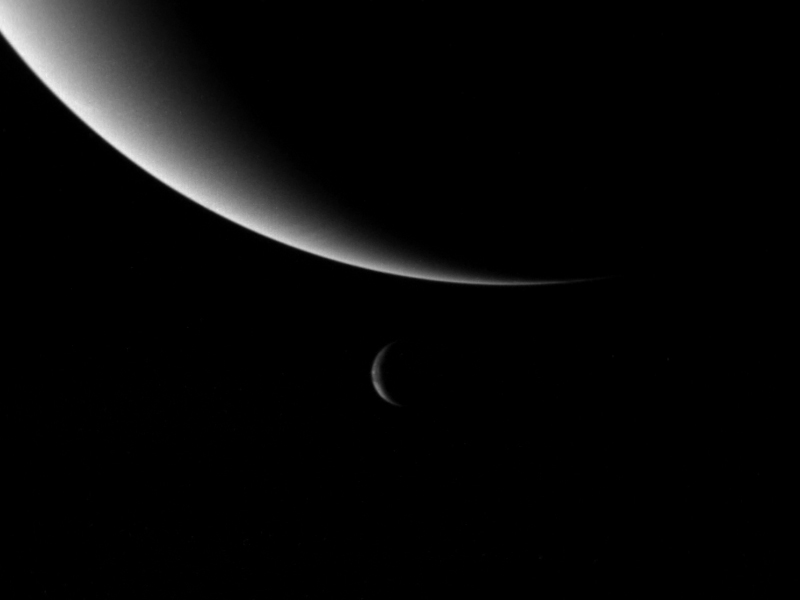|
Capture Of Triton
Triton (moon), Triton, the largest Natural satellite, moon of the ice giant planet Neptune, is hypothesized to have been Gravitational capture, captured from heliocentric orbit. Triton is unusual as it is the only known large moon on a Retrograde and prograde motion, retrograde, highly-Orbital inclination, inclined orbit; that is, Triton orbits in the opposite direction Neptune rotates, and its orbit is not aligned with Neptune's equatorial plane. This conflicts with the conventional theory of moon formation, where large moons tend to form from circumplanetary disc, discs of debris and thus orbit prograde. As a result, astronomers have proposed various hypotheses on how Triton acquired its unusual orbital configuration, with capture hypotheses currently being the tentative consensus. The capture of Triton would have been a cataclysmic event, severely disrupting any pre-existing moons around Neptune while Triton itself experienced extreme tidal heating and possibly collisions with ... [...More Info...] [...Related Items...] OR: [Wikipedia] [Google] [Baidu] |
Nereid (moon)
Nereid, or Neptune II, is the third-largest moon of Neptune. It has the most eccentric orbit of all known moons in the Solar System. It was the second moon of Neptune to be discovered, by Gerard Kuiper in 1949. Discovery and naming Nereid was discovered on 1 May 1949 by Gerard P. Kuiper using photographic plates taken with the 82-inch telescope at the McDonald Observatory. He proposed the name in the report of his discovery. It is named after the Nereids, sea-nymphs of Greek mythology and attendants of the god Neptune. It was the second moon of Neptune to be discovered, and the last before the arrival of ''Voyager 2'' (not counting a single observation of an occultation by Larissa in 1981). Physical characteristics Nereid is third-largest of Neptune's satellites, and has a mean radius of about , similar to Saturn's moon Mimas. It is by far the largest normal irregular satellite known, having about two-thirds the mass of all irregular moons combined. ( Triton is much l ... [...More Info...] [...Related Items...] OR: [Wikipedia] [Google] [Baidu] |

